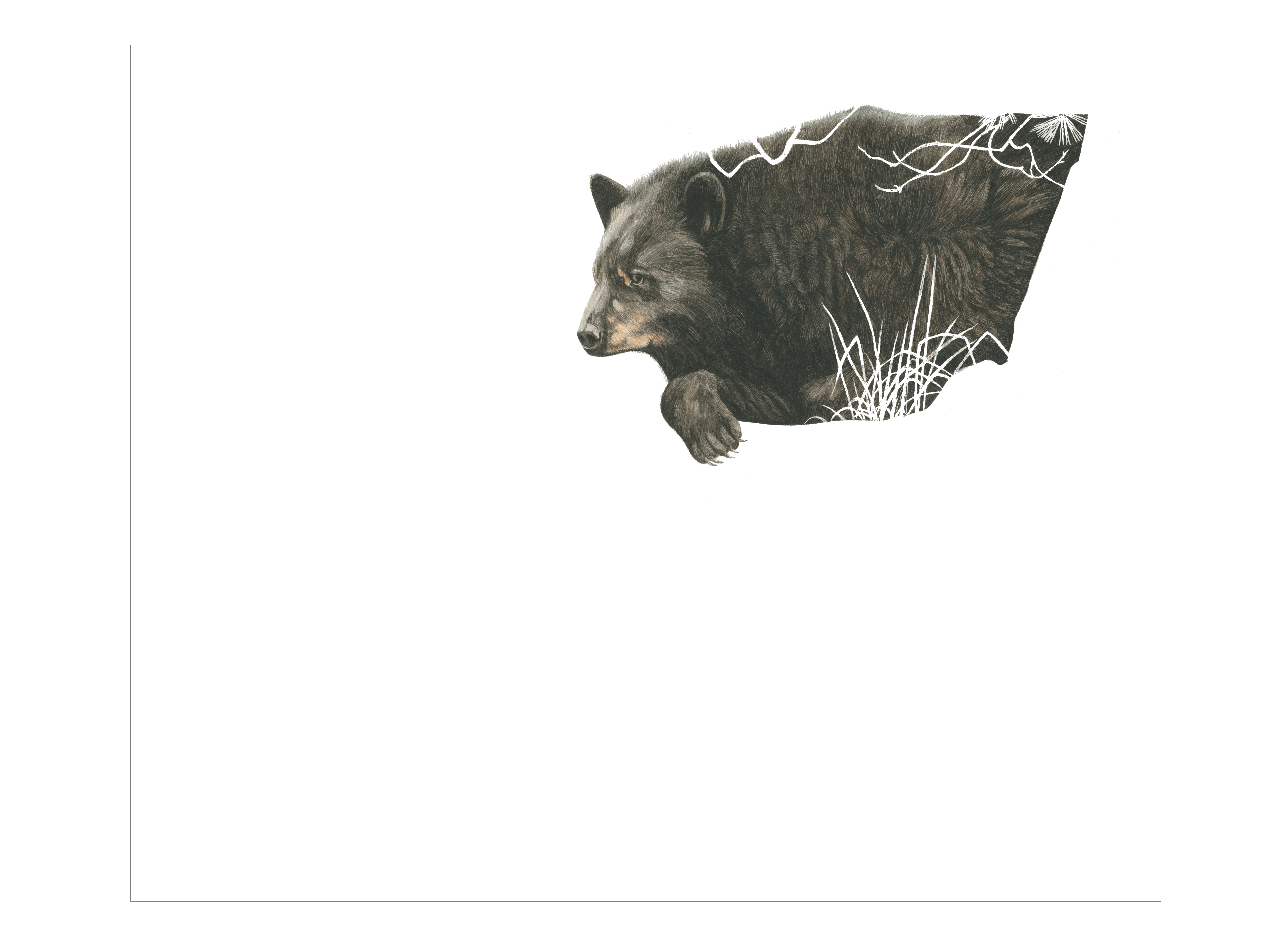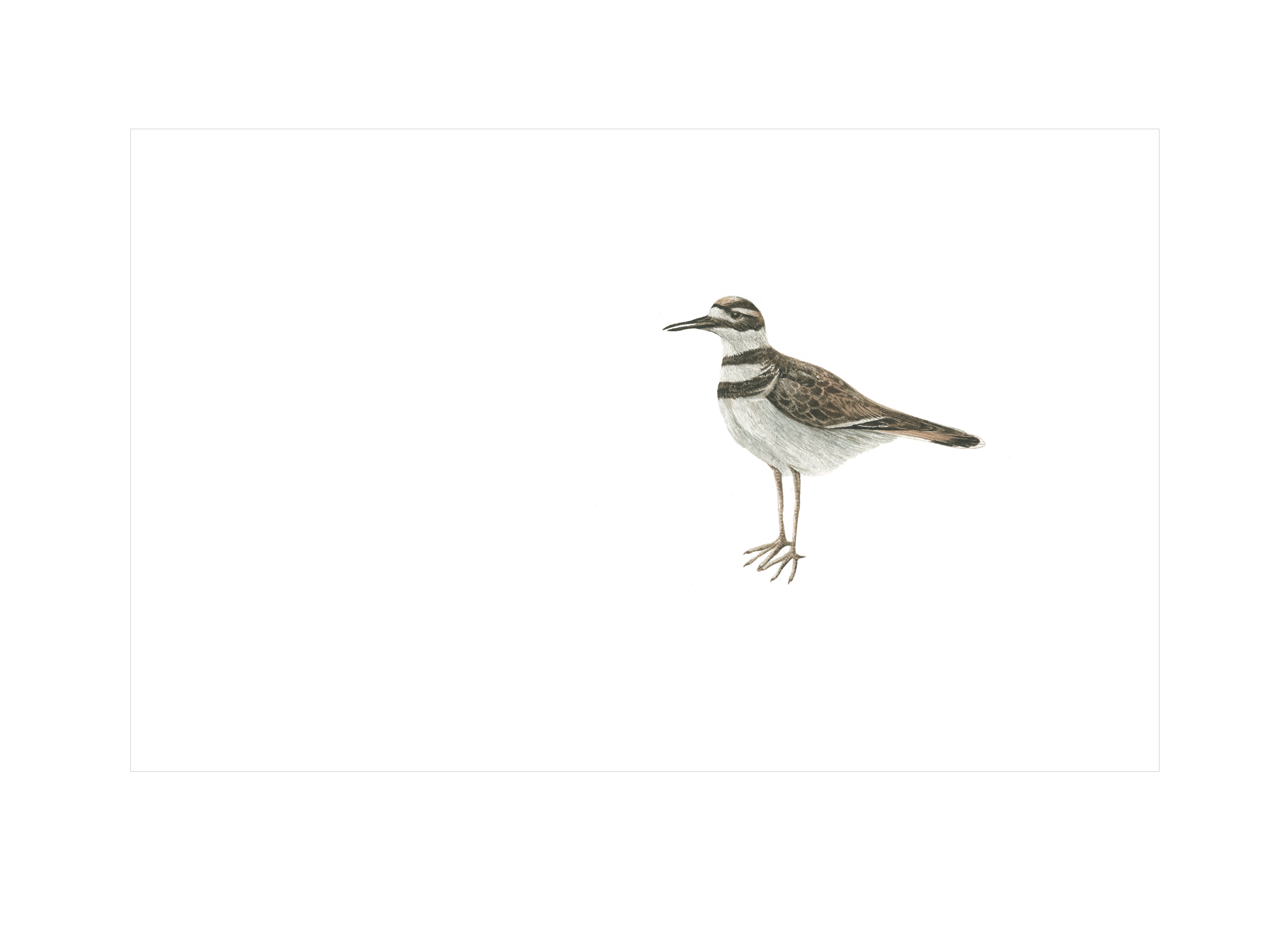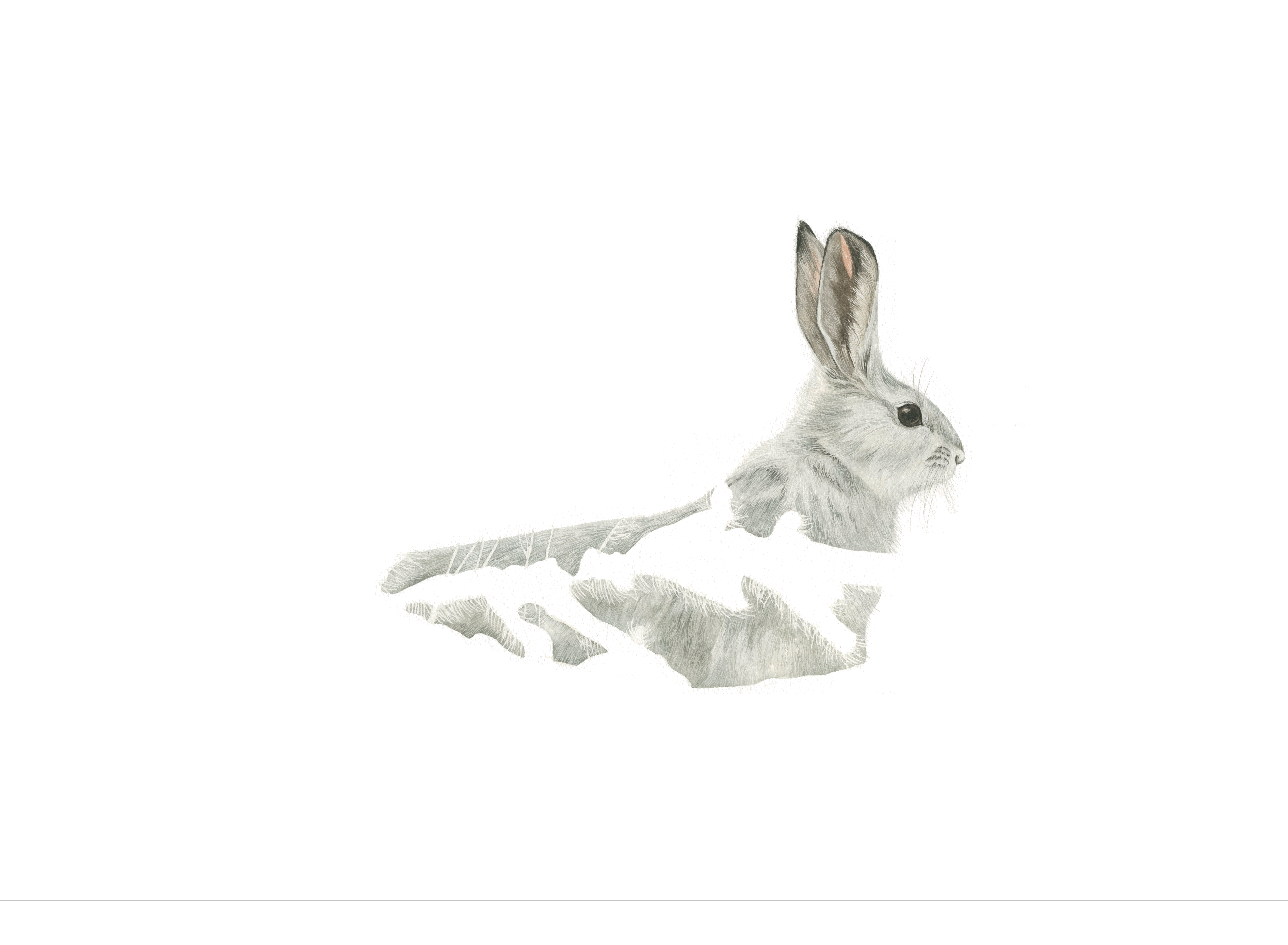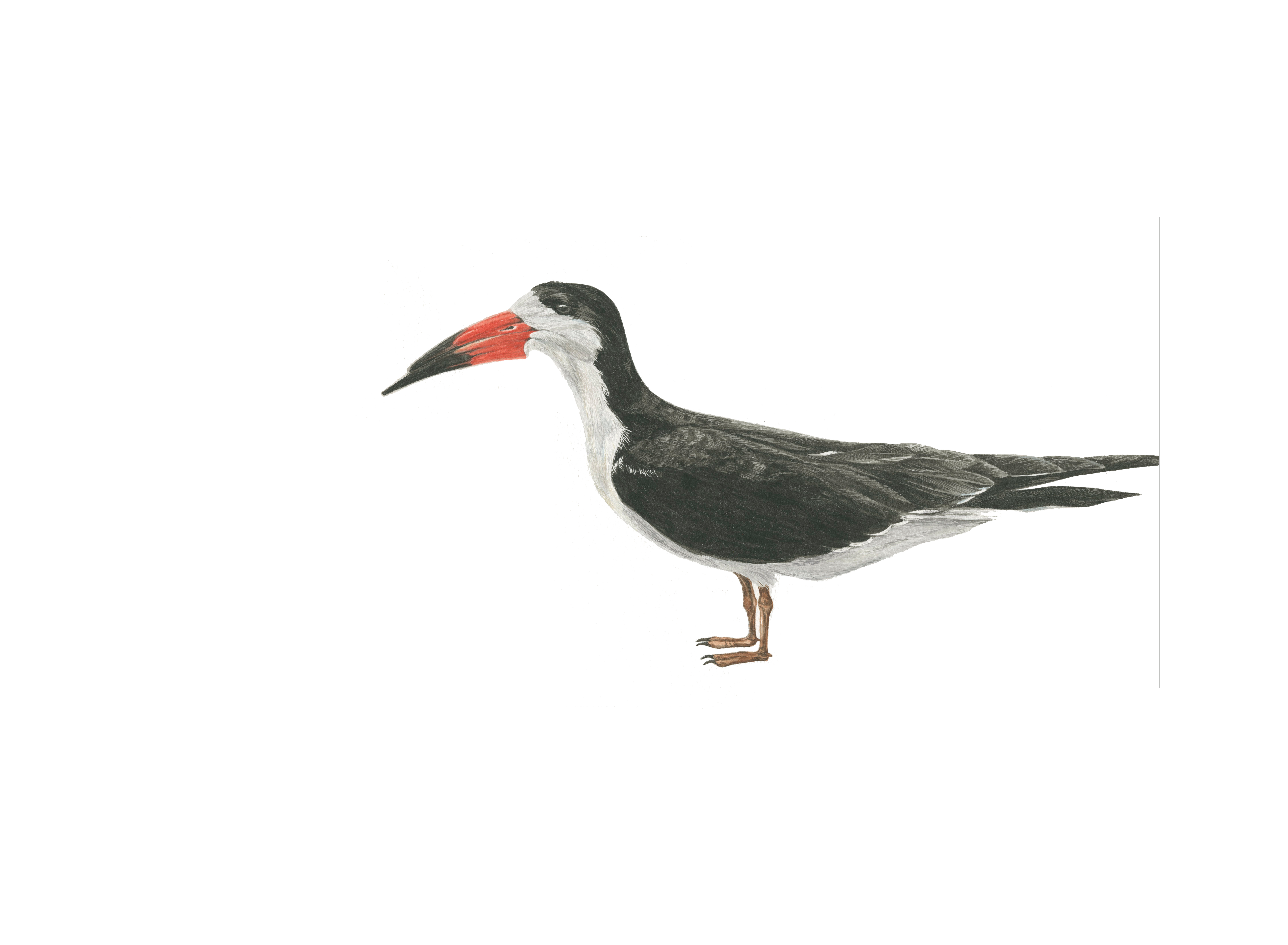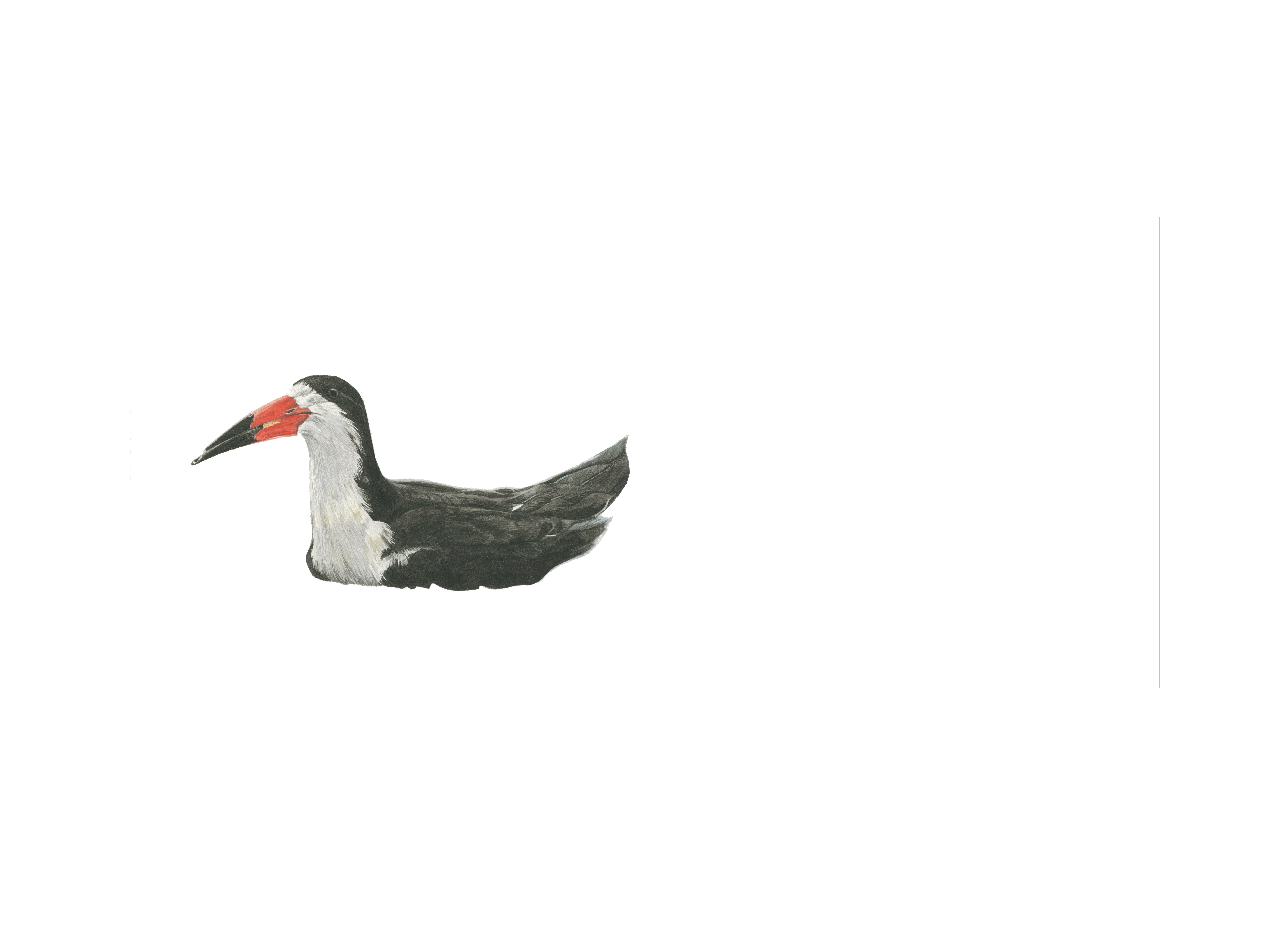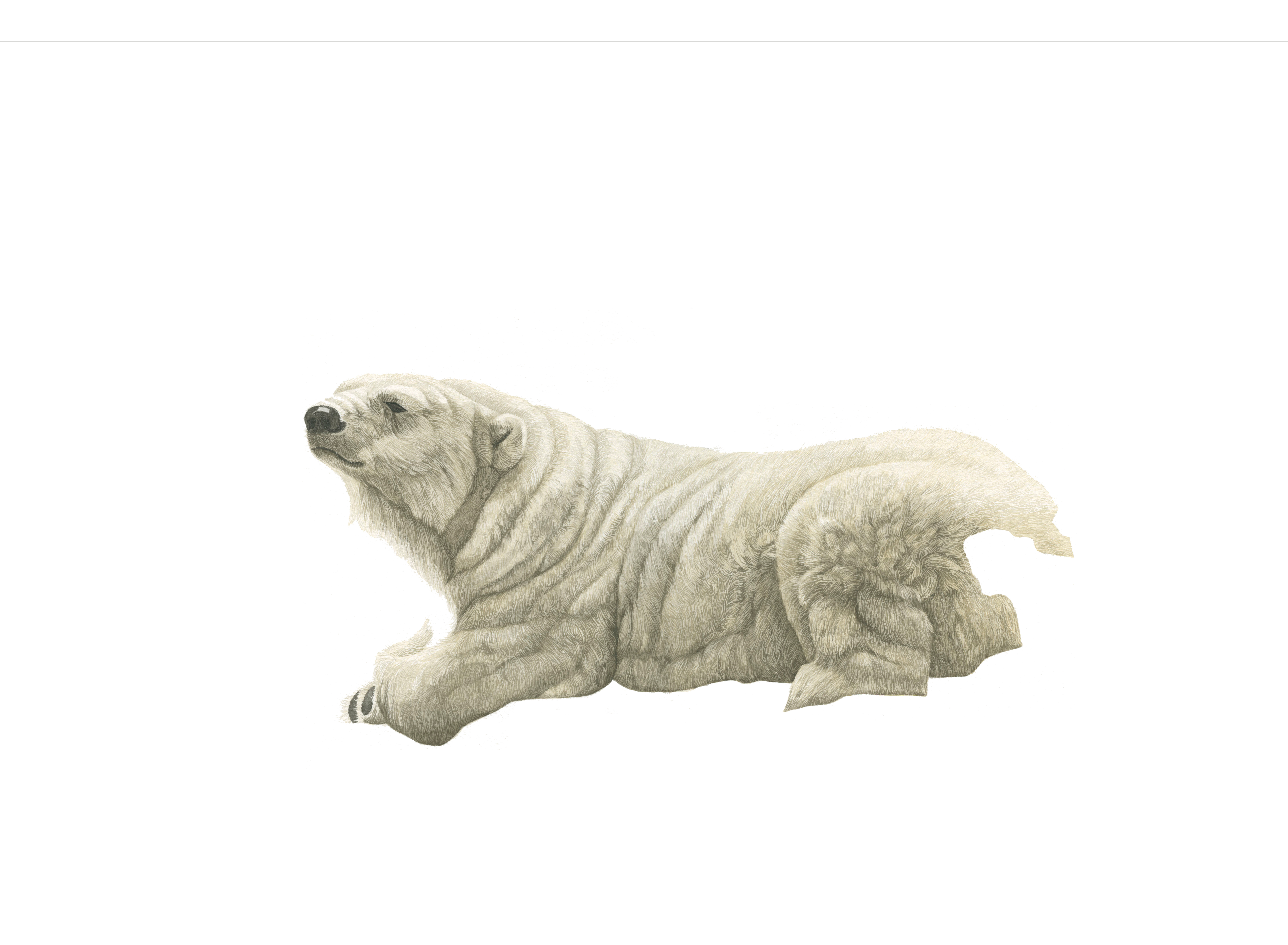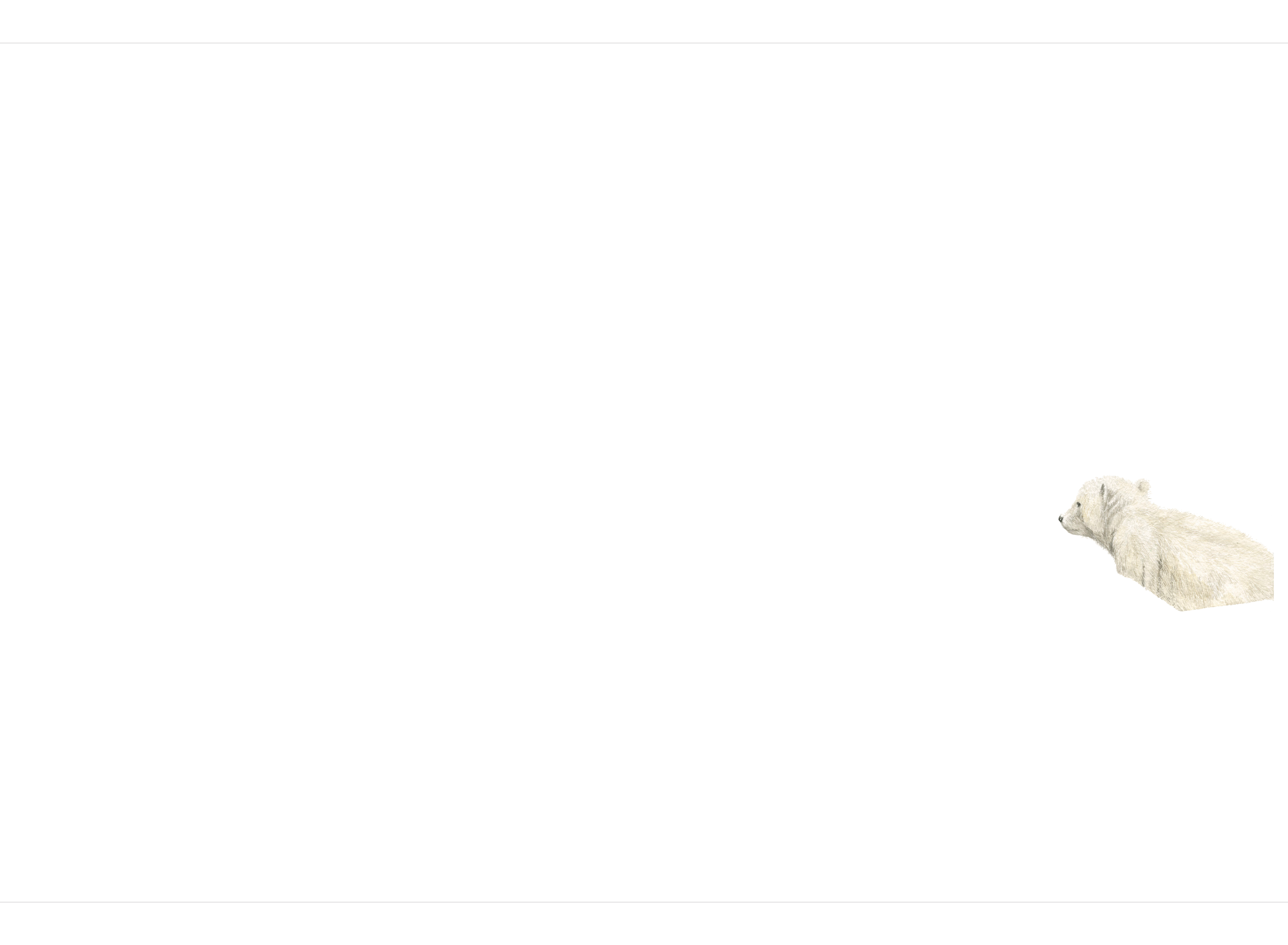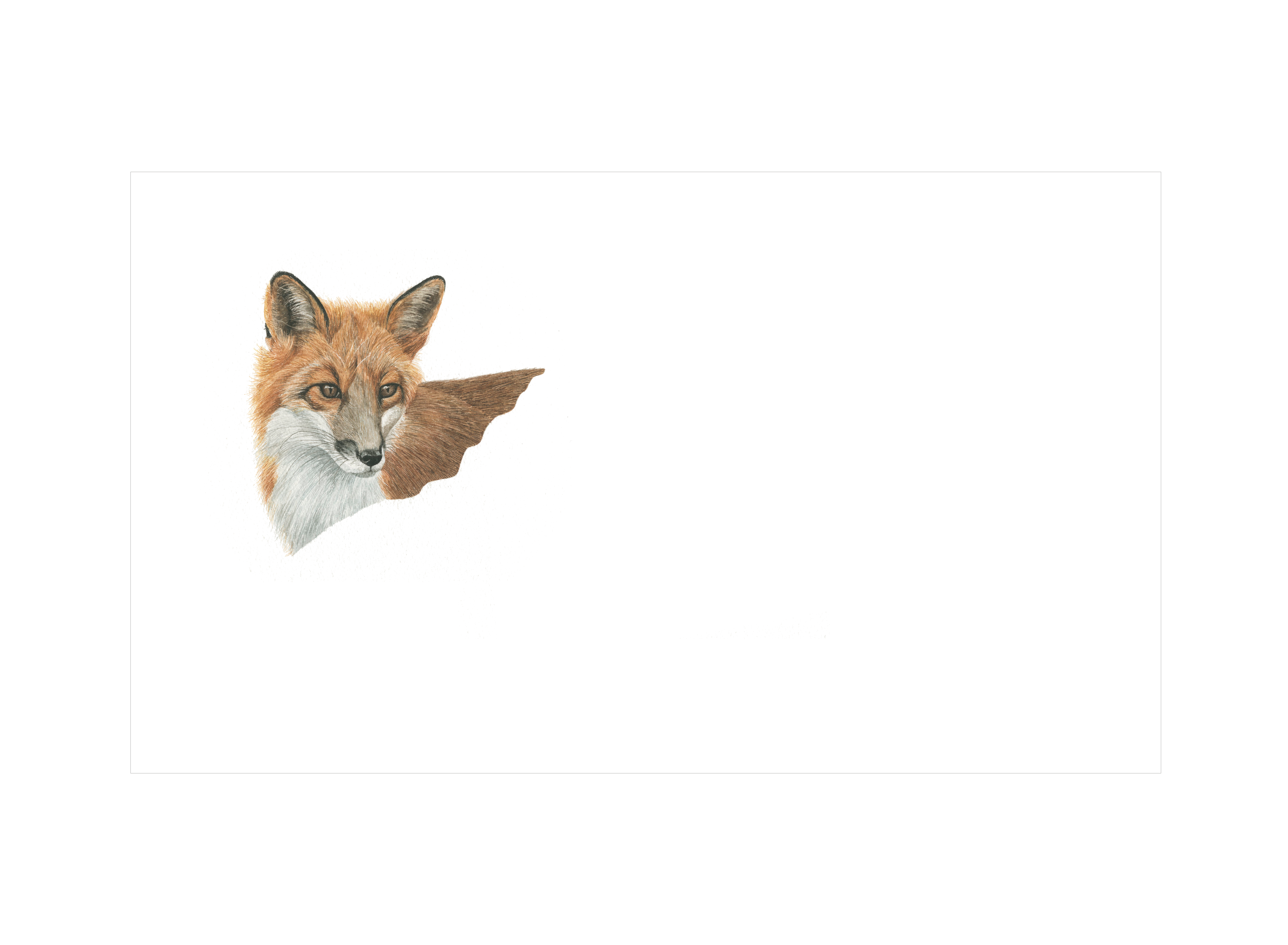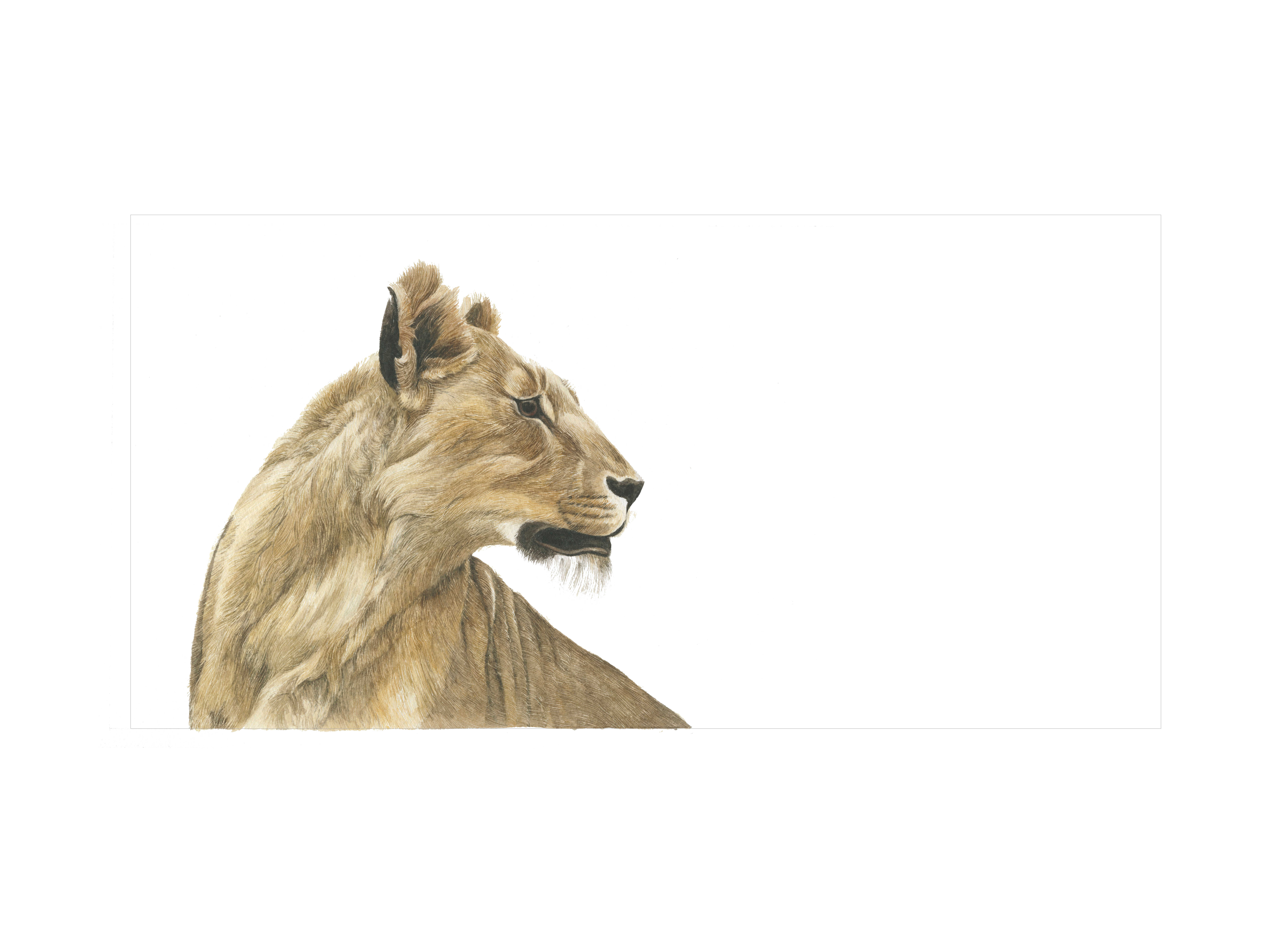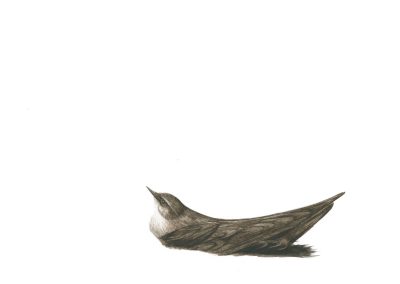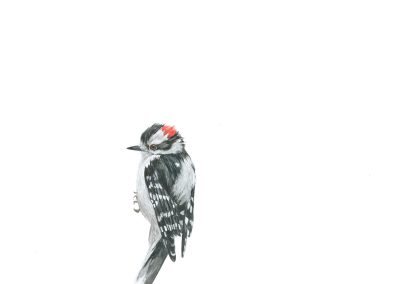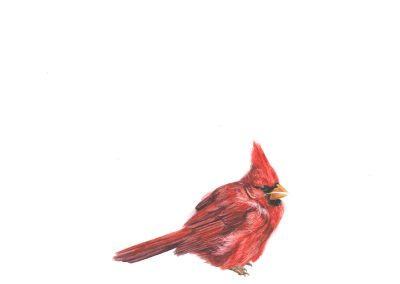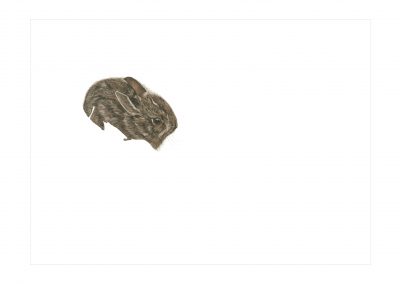
THE EFFECT OF SPACE
READ ARTIST STATEMENT
In my practice, I often use non-human animal imagery as a metaphor for human activities and emotions. On occasion someone will make a comparison between my work and that of Robert Bateman, Canada’s renowned wildlife artist. Although we both paint animals with verisimilitude, I believe our intentions are different and so I have been compelled to ask myself, what specifically distinguishes our work? I decided to engage directly with the work of Robert Bateman in order to answer this question. Referring to his monograph, The Art of Robert Bateman, I selected individual reproductions and copied the animals from each work as meticulously as possible in watercolour on paper. I worked in the dimensions of the original as listed in the monograph but omitted the landscape in which each animal was situated (just as I had excluded both the body of the animal and its environment in a previous series of animal drawings.) This omission left each creature stranded on a sea of white and led to the title of this project, The Effect of Space; it also rather summarily answered my question. It is the space left empty or the incompleteness of the work that alters its effect. Rather than offering a completed scene, the viewer is provided with a place in which their own imagination may operate.
Inevitably, other questions and ideas arose during this process. For instance, it occurred to me that my copies are not in fact copies of Bateman paintings. They are copies of photomechanical reproductions of his work. At the time of writing this, I have yet to see an original Bateman painting. Likewise, I have not seen many of the creatures that he and I have painted. It could be argued that most Canadians have seen more bears as found in the work of Bateman than they’ve seen in the wild. Canada’s polar bear population is estimated to be roughly 16,000;1 the number of Bateman prints of polar bears is close to 19,000.2 Bateman’s reproductions populate our country in massive numbers – there are said to be “approximately one million Bateman prints in circulation in the marketplace, plus more than one million copies of his coffee-table books.”3 Most of these prints and books, I believe, are situated around and in areas of dense human population and are not nearly as shy of human contact as the animals whose images are captured therein. In painting animals as found in Bateman’s work, I posit that I am simply painting everyday objects from my immediate surroundings. To paraphrase Magritte, “Ceci n’est pas un ours polaire.”
Bateman maintains a somewhat defensive stance on the artistic validity and value of printed reproductions.4 On the inclusion of reproductions alongside originals in his new museum on Victoria’s waterfront, Bateman said that, “…the main thing behind a piece of art is the thought.”5 I interpret this statement to mean that the artist’s choice of subject matter, its composition and execution carry enough information through in its printed form to provide the viewer with a meaningful experience. Given the popularity of his prints, this must be the case. By copying these prolific images carefully by hand, I want to explore what value—monetary, artistic or otherwise—remains in the mark of a brush and paint laid on paper by hand.
As images of animals proliferate around us, I have begun to question my own use of animal imagery. I turn time and time again to John Berger’s 1978 essay Why Look at Animals? in which he suggests that “…the life of a wild animal becomes an ideal… the starting point of a day-dream: a point from which the day-dreamer departs with his back turned.”6 Am I simply enthralled along with everyone else with the idea of the wild animal?
Our relationship as human animals with non-human animals is fraught with the tension between our romanticism of the image of the wild animal and our inability to sustain the environment these creatures need to survive. By omitting the landscape in my copies, I want to prompt the observer to consider how animals inhabit both our imaginations and our physical environment. By choosing to work in watercolour on paper, a fragile medium on a fragile surface, I want to emphasize a tenuousness and vulnerability to the work in contrast to Bateman’s works which are painted in oil or acrylic on canvas then sent forth and multiplied in great numbers. Bateman has used his success as an artist to become one of Canada’s leading advocates for environmental conservation and education. I am interested in the rampant consumption of animal imagery and how it relates to our nearly complete physical separation as human animals from our non-human animal counterparts.
https://www.ec.gc.ca/nature/default.asp?lang=En&n=A997D1CC-1
I arrived at this number by searching online for polar bear prints by Bateman and counting the numbers in each edition. He has painted twelve compositions with polar bears, each reproduced in runs of 950 to 5000.
Lederman, Marsha. The Robert Bateman Centre: The art snobs may sneer, but the people will come. The Globe and Mail. 27 May 2013. Online.
See, “A question of prints.” http://collections.batemancentre.org/artist/question-prints
Lederman, Marsha. The Robert Bateman Centre: The art snobs may sneer, but the people will come. The Globe and Mail. 27 May 2013. Online.
Berger, John. “Why Look at Animals?” About Looking. 1980. p. 21.

